DRAWINGS AND SKETCHES William Brocas RHA (c.1794-1868)
Signature: some works inscribed Medium: red leather-bound sketchbook with 40 drawings loosely....... Provenance: Bookplate of Edward S. Herbert on front pastedown The subject matter contained in this handsome red leather-bound sketchbook is wide-ranging and confirms the view that William Brocas RHA (c.1794-1868), like the rest of his family, was a fascinating r... recorder of life in nineteenth century Ireland.1 Born in Dublin, the artist was the third son of Henry Brocas Senior (c.1762-1837), influential and long-standing drawing Master of the Dublin Society’s School of Landscape and Ornament (appointed 14 August, 1800-37). William, like his other three brothers, James, Samuel and Henry Junior, trained under his father but unlike his brothers he tended to specialise largely in the field of portraiture, the family’s strong political and social connections being a useful advantage throughout his career.2 He exhibited portraits and figure subjects as well as occasional landscapes at the RHA between 1828 and 1863 and was elected Associate and Member of the RHA in 1854 and 1860.3 He was also President of the Society of Irish Artists, who held their first exhibition at the Royal Irish Institution in College Street, Dublin, in 1843. An interpretation in watercolour and pencil of Dublin born politician and socialite, Quentin Dick (1777-1858) appears on p. 45 (drawing no. 27). Son of Samuel Dick (d.1802), a wealthy East India merchant, his mother Charlotte was the daughter of Nicholas Forster of Tullaghan, Co. Monaghan. Later, Quentin Dick’s sister, Charlotte-Anne, was to marry William Hoare Hume of Humewood, Kiltegan, Co. Wicklow. The latter was elected in 1798 to fill the vacancy left by the untimely death of his father, William, shot in the Wicklow mountains by a party of rebels on 8 October 1798. After graduating from Trinity College Dublin in 1797, Quentin Dick practised as a barrister at the King’s Inns, Dublin (1800). His long but not particularly distinguished parliamentary career began in 1800 as nominee of a relative, sitting in 1800 for Dunleer, Co. Louth, in the Irish Parliament. Opposed to the Act of Union, and after inheriting a substantial amount of his father’s wealth, Dick entered the British Parliament by purchasing West Looe, Cornwall (held 1803 to 1806). Largely through wealth and influence, he went on to hold Orford, Suffolk (1826-30), Maldon, East Essex (1830-47) and Aylesbury, Buckinghamshire (1848-52). In 1833 he was included in Sir George Hayter’s (1792-1871) group portrait of nearly 400 figures, which was presented by the government to the National Portrait Gallery, London in 1858. Dick’s abilities appear to have been more celebrated on the social stage than in the political field. The presenter of many an opulent and lavish dinner party held in his house in Mayfair, his guests included Lord Walpole and Benjamin Disraeli. The genial Irish host is mentioned on a number of occasions in the Prime Minister’s correspondence and was later to feature as the hospitable millionaire, Ormsby, in Disraeli’s Coningsby (1844).4 The dandified ’Carrotty Quintin’ died at 20 Curzon St, Mayfair, leaving a substantial fortune estimated at between £2 million to £3 million.5 Drawing no. 19 in the album connects to a pencil and watercolour drawing, half length, inscribed in pencil ‘Lord Sandys’, which forms part of the Windsor and London sketchbook by William Brocas (Brocas collection, NLI).6 In both portraits, the artist depicts the sitter half-length, seated on a horse, holding the reins in his left hand, and attired in the undress uniform of his regiment, the 2nd Royal North British Dragoons. On his left breast, the artist has made provision for a medal. This was the Waterloo Medal, which the sitter would have been entitled to wear.7 Arthur Moyses (Hill), Lord Sandys of Ombersley, was educated at Eton 1802-04, and in July 1809 joined the 10th Lt. Dragoons. He served in the Peninsula War on Wellington’s staff and was awarded a me
DRAWINGS AND SKETCHES William Brocas RHA (c.1794-1868)
Signature: some works inscribed Medium: red leather-bound sketchbook with 40 drawings loosely....... Provenance: Bookplate of Edward S. Herbert on front pastedown The subject matter contained in this handsome red leather-bound sketchbook is wide-ranging and confirms the view that William Brocas RHA (c.1794-1868), like the rest of his family, was a fascinating r... recorder of life in nineteenth century Ireland.1 Born in Dublin, the artist was the third son of Henry Brocas Senior (c.1762-1837), influential and long-standing drawing Master of the Dublin Society’s School of Landscape and Ornament (appointed 14 August, 1800-37). William, like his other three brothers, James, Samuel and Henry Junior, trained under his father but unlike his brothers he tended to specialise largely in the field of portraiture, the family’s strong political and social connections being a useful advantage throughout his career.2 He exhibited portraits and figure subjects as well as occasional landscapes at the RHA between 1828 and 1863 and was elected Associate and Member of the RHA in 1854 and 1860.3 He was also President of the Society of Irish Artists, who held their first exhibition at the Royal Irish Institution in College Street, Dublin, in 1843. An interpretation in watercolour and pencil of Dublin born politician and socialite, Quentin Dick (1777-1858) appears on p. 45 (drawing no. 27). Son of Samuel Dick (d.1802), a wealthy East India merchant, his mother Charlotte was the daughter of Nicholas Forster of Tullaghan, Co. Monaghan. Later, Quentin Dick’s sister, Charlotte-Anne, was to marry William Hoare Hume of Humewood, Kiltegan, Co. Wicklow. The latter was elected in 1798 to fill the vacancy left by the untimely death of his father, William, shot in the Wicklow mountains by a party of rebels on 8 October 1798. After graduating from Trinity College Dublin in 1797, Quentin Dick practised as a barrister at the King’s Inns, Dublin (1800). His long but not particularly distinguished parliamentary career began in 1800 as nominee of a relative, sitting in 1800 for Dunleer, Co. Louth, in the Irish Parliament. Opposed to the Act of Union, and after inheriting a substantial amount of his father’s wealth, Dick entered the British Parliament by purchasing West Looe, Cornwall (held 1803 to 1806). Largely through wealth and influence, he went on to hold Orford, Suffolk (1826-30), Maldon, East Essex (1830-47) and Aylesbury, Buckinghamshire (1848-52). In 1833 he was included in Sir George Hayter’s (1792-1871) group portrait of nearly 400 figures, which was presented by the government to the National Portrait Gallery, London in 1858. Dick’s abilities appear to have been more celebrated on the social stage than in the political field. The presenter of many an opulent and lavish dinner party held in his house in Mayfair, his guests included Lord Walpole and Benjamin Disraeli. The genial Irish host is mentioned on a number of occasions in the Prime Minister’s correspondence and was later to feature as the hospitable millionaire, Ormsby, in Disraeli’s Coningsby (1844).4 The dandified ’Carrotty Quintin’ died at 20 Curzon St, Mayfair, leaving a substantial fortune estimated at between £2 million to £3 million.5 Drawing no. 19 in the album connects to a pencil and watercolour drawing, half length, inscribed in pencil ‘Lord Sandys’, which forms part of the Windsor and London sketchbook by William Brocas (Brocas collection, NLI).6 In both portraits, the artist depicts the sitter half-length, seated on a horse, holding the reins in his left hand, and attired in the undress uniform of his regiment, the 2nd Royal North British Dragoons. On his left breast, the artist has made provision for a medal. This was the Waterloo Medal, which the sitter would have been entitled to wear.7 Arthur Moyses (Hill), Lord Sandys of Ombersley, was educated at Eton 1802-04, and in July 1809 joined the 10th Lt. Dragoons. He served in the Peninsula War on Wellington’s staff and was awarded a me


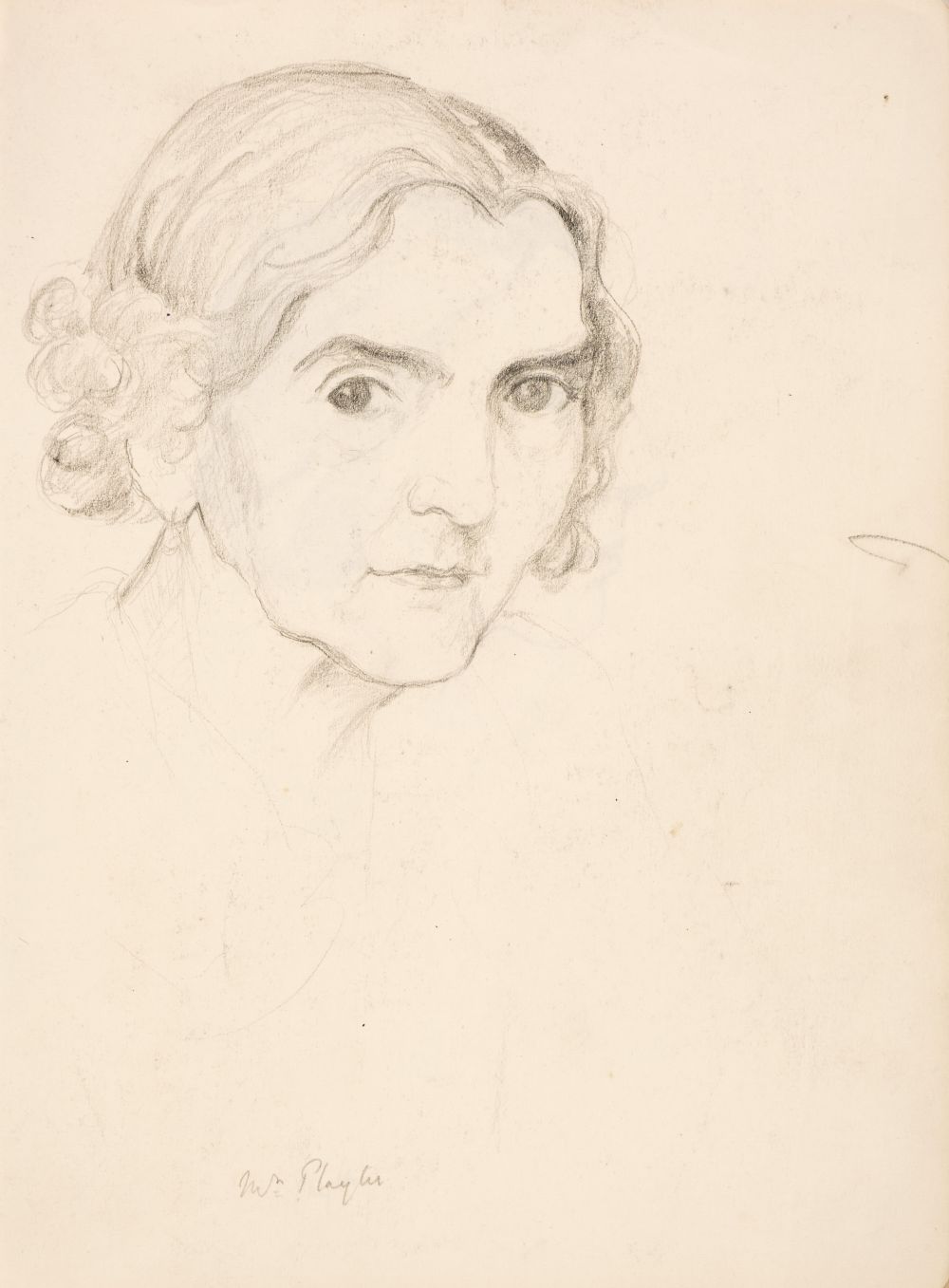


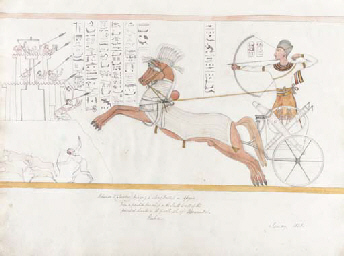

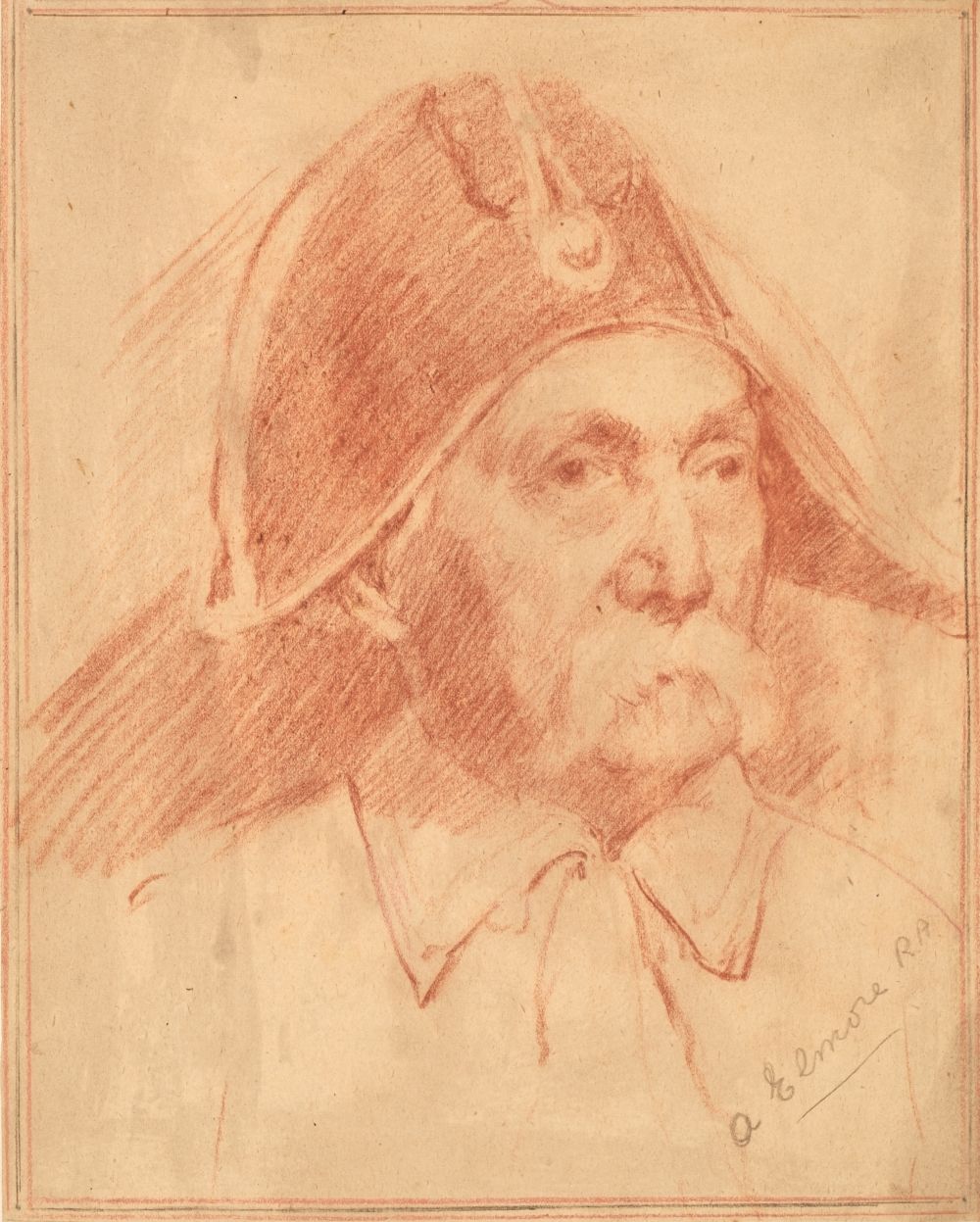



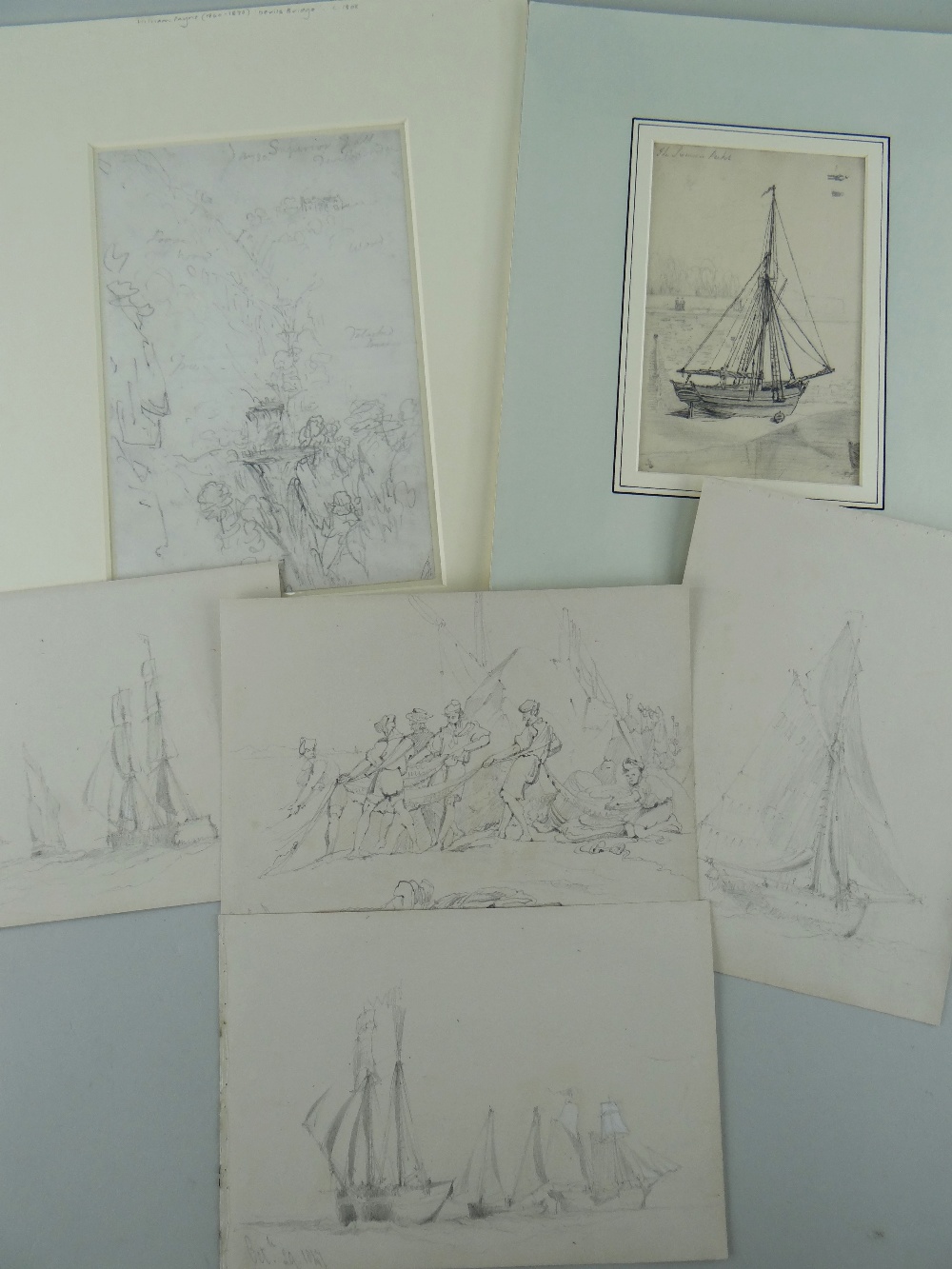

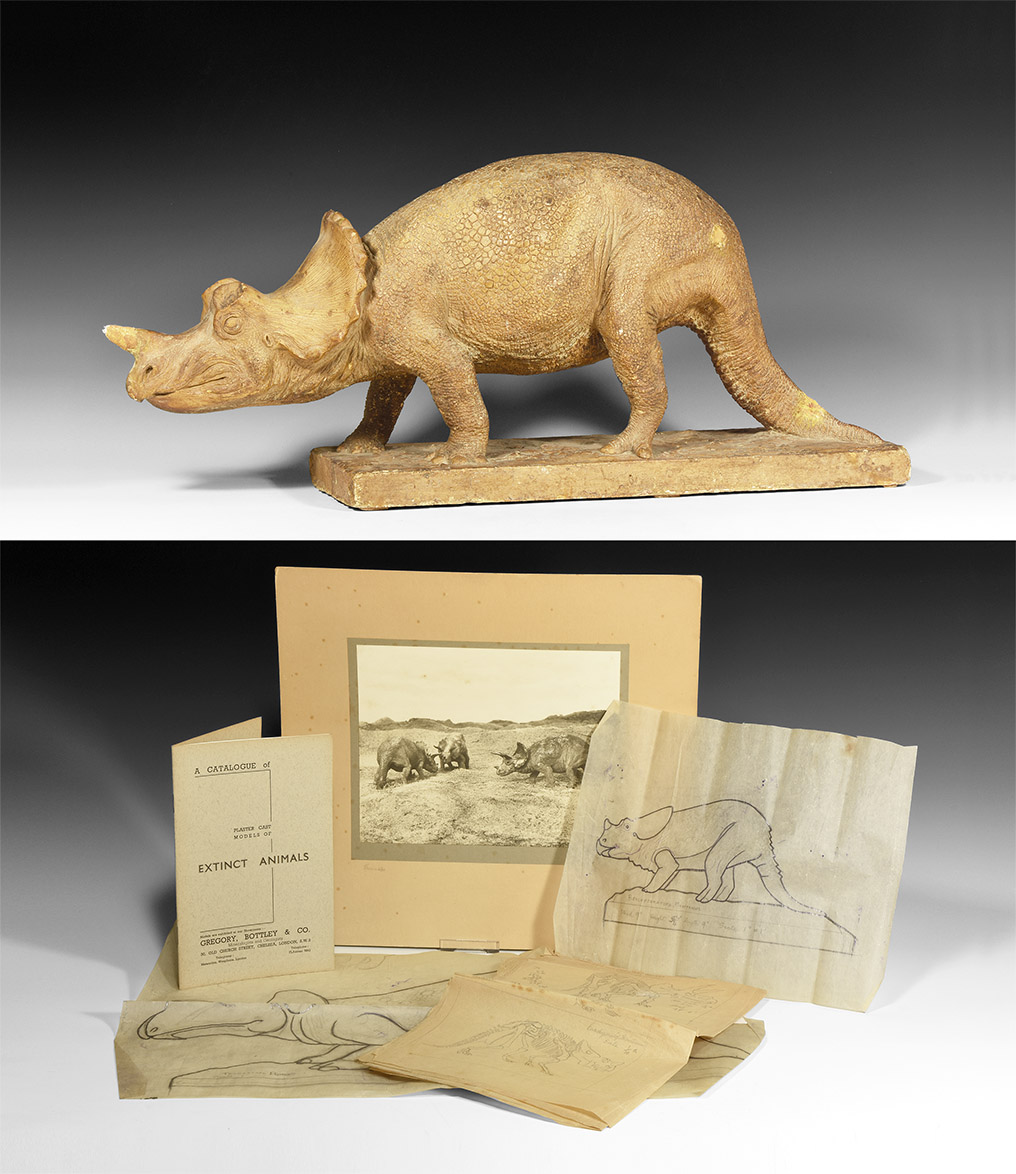
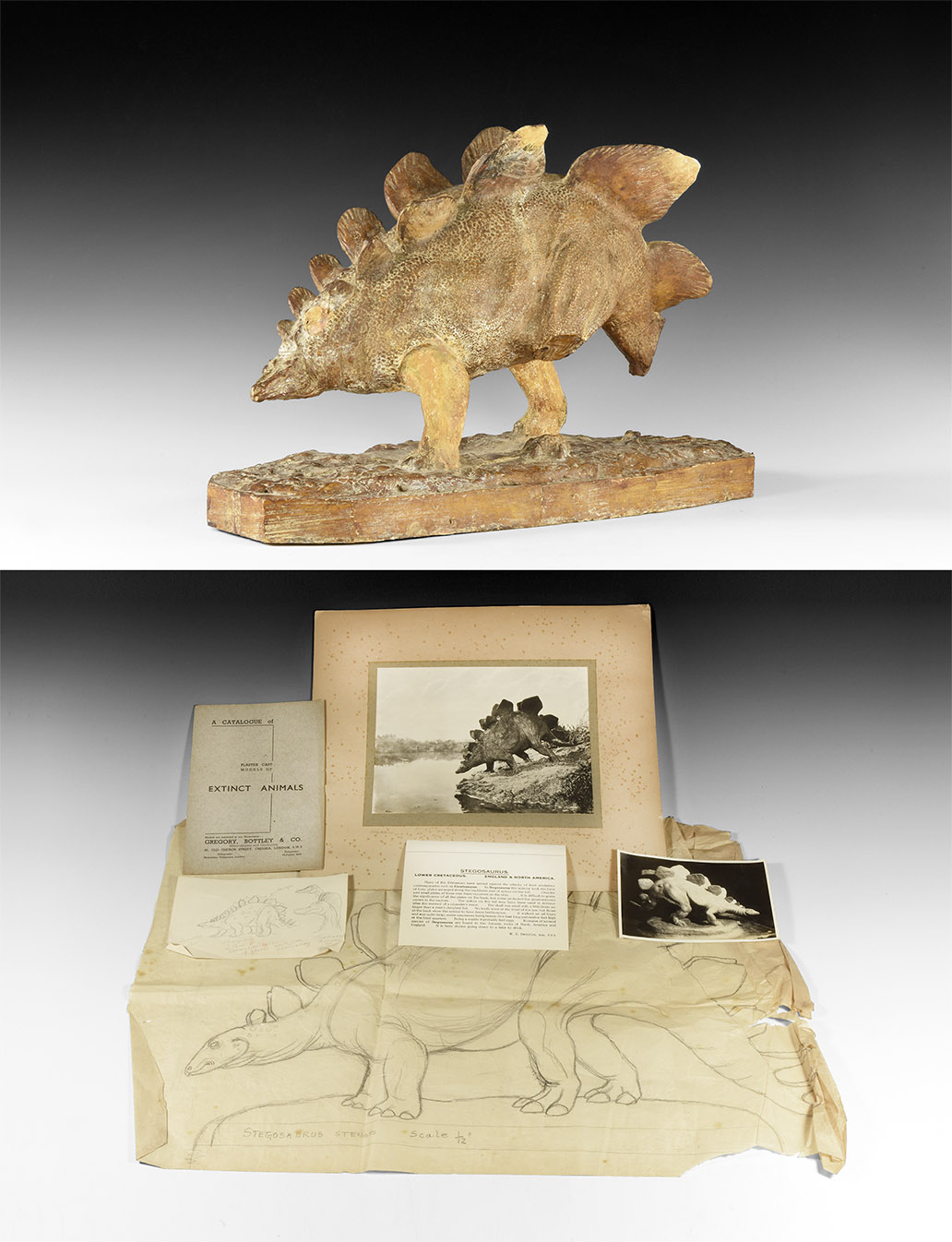
Testen Sie LotSearch und seine Premium-Features 7 Tage - ohne Kosten!
Lassen Sie sich automatisch über neue Objekte in kommenden Auktionen benachrichtigen.
Suchauftrag anlegen